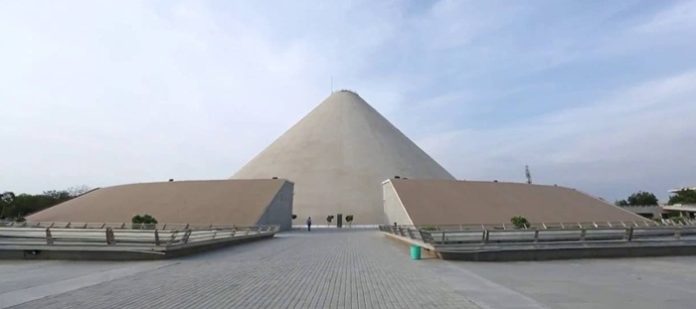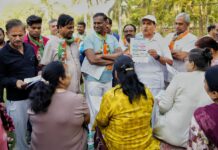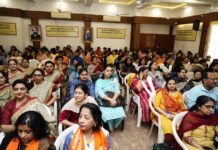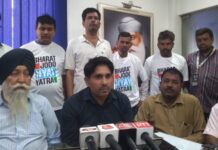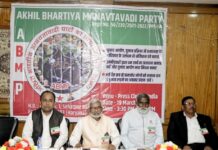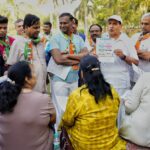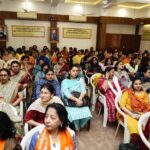K V Venkatasubramanian (Senior Journalist )
Mahatma Gandhiji would not have dreamt an iota that his life’s journey would be retold one day with the help of technology; that he would remain eternal in everyone’s hearts even after 150 years. And like him, his teachings too.
Mohandas Karamchand Gandhi had recognized more than a century ago that machinery had come to stay. He believed that machines could solve people’s problems. But he was also concerned that modern machinery could enslave Indians.
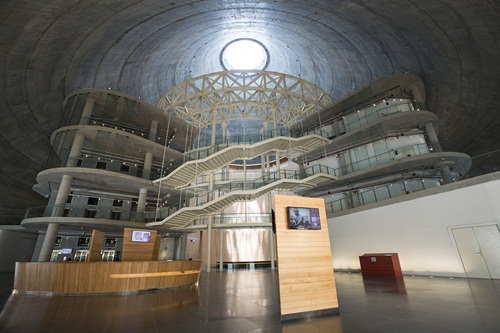
Gandhiji comes alive through black and white photographs and audio-visuals at the Mahatma Mandir, a convention center and a memorial, spread across 34 acres in Gandhinagar. The museum uses modern technological innovations to cultivate new dialogues around Gandhiji–instead of displaying exhibit artifacts and telling conventional hagiographies.
Arrows on the floor steer you through Bapu’s life story. As you stop near the markers, Gandhi’s voice springs to life. Audio guides, synchronized with visuals and sounds, surround and envelope you, as you watch his meetings with the people and his address at various gatherings, motivating crowds across India, especially in rural settings, to rise in unison and peacefully revolt against the British raj.
Sauntering along, you are attracted by the use of sophisticate technology–4D virtual reality, laser light shows, 3D holography and digital LED floor. It is an interactive, immersing and spellbinding experience to watch Gandhiji’s life and times.
The museum showcases the transformation of an ordinary individual into a Mahatma who led India to independence. It blends a fine concept and deep touch of art and technology. The unique architectural edifice provides visitors a forward-looking space to contemplate Gandhian principles and reflect on singular and collective futures.
The architecture is iconic for three elements:–An immersive multimedia museum housed in the salt mound, a concrete dome structure, named “Dandi Kutir”, the conical shell symbolic of the Salt Satyagraha of 1930; It represents Gandhi’s powerful idea of people across lines of class, gender, age and community asserting their common right to salt itself, a symbol to inspire a pluralistic society to march toward ‘complete freedom from the British’–purna swaraj
The other two are a cable-stayed bridge inspired by the charkha crowned by two windmills atop its two pylons, and a Gandhi garden commemorating his life through 79 iconic sculptures and murals. It also houses a library and research center. One cannot miss the grand spinning wheel–Gandhiji’s symbolic, intimate and inseparable charkha.

Splendidly portrayed, visitors get a glimpse of his early days, his life and teachings; from his birth on October 2, 1869 in the sea-side Porbandar town in Kathiawad peninsula to his childhood when he was a shy, remarkable and an exceptional student. It also traces his marriage to Kasturba and his experiments with truth. His early childhood is recalled through docu-drama. The visuals cover the Kathiawad region, Porbandar and Rajkot, and also his journey to England and South Africa.
The section on Gandhiji’s life in London and back home starts with Gandhiji, then 18, sailing to London to study law. Struggling with transition to western culture, during his three-year stay, he became more committed to a meatless diet, joining the executive committee of the London Vegetarian Society. He started to read diverse sacred texts to learn more about world religions. His return to India made him realize his failure as a lawyer and subsequent lessons that came along with it.
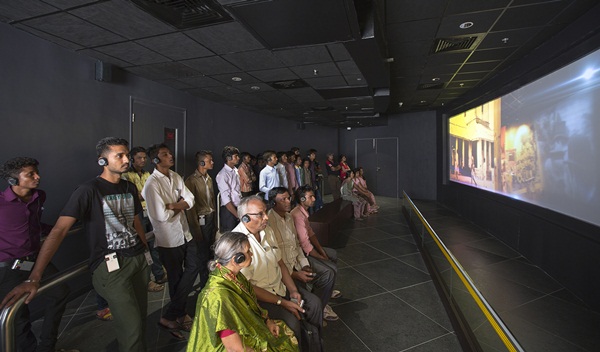
The mahatma’s struggles in South Africa heavily seeped in racism is pertinently presented in the section on his life in this country. From the time when he was thrown out the train for not being white, to his success in setting up the Indian National Congress, he developed a determination to devote himself to fighting the “deep disease of colour prejudice.” He vowed to “try, if possible, to root out the disease and suffer hardships in the process.” From then forward, the diminutive and unassuming Bapu grew into a force to reckon with for civil rights.
Recreated visuals and photos depict his return to India in 1915, and founding an ashram in Ahmedabad open to all castes. This part of the museum focuses on the life of Gandhi after embracing the fight for justice and how Satyagraha became a national sensation for the freedom struggle. As one follows the arrows, through photographs and visuals, one gets a glimpse of his meeting with Gokhale, Satyagraha Ashram, his travel through the country, Champaran and Kheda satyagraha, Rowlatt Act and Civil Disobedience, the Jallianwala Bagh Incident, Swadeshi and Khilafat Movement, non-cooperation movement, Chauri-Chaura Incident, Bardoli Satyagraha and Sardar Patel.
Further down, you embark on a journey toward achieving Independence from the British. History glides along the Round Table Conference in London, salt purification and the social movement, removal of untouchability, the constructive programme, Quit India movement, demise of Kasturba, Independence and the Partition. Gandhiji’s vision and legacy are at the core of the museum; an experiential delight.


